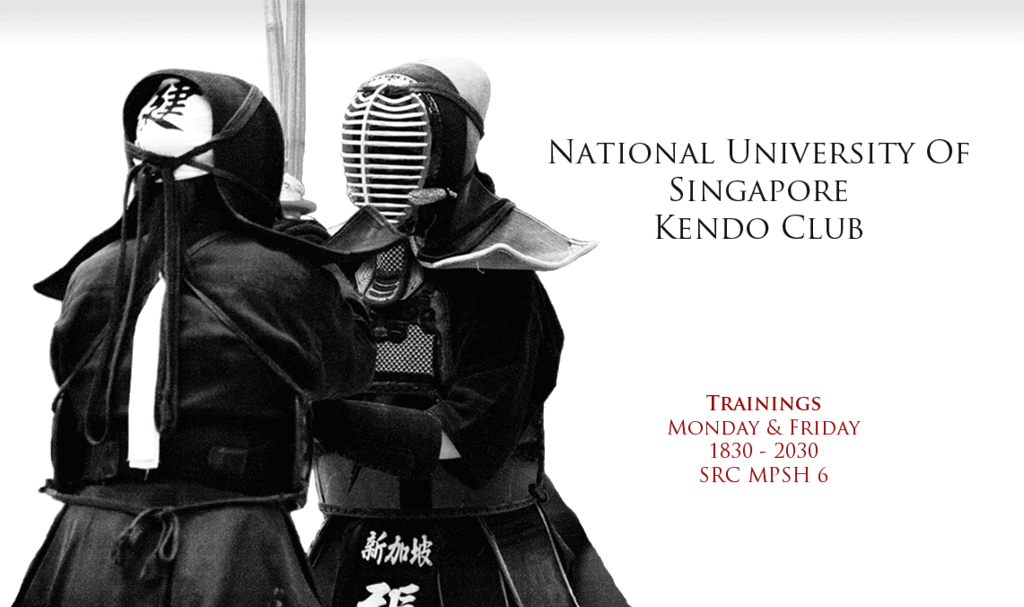Wednesday, December 22, 2010
22nd Lim Kwa Chee Memorial Tournament
By Oke and Ricky
The 22nd LKC Tournament was held at the Singapore Kendo Club on the 18th of Dec, 2010.
Oke and Ricky share their experiences at the event.
OKE:
"The LKC tournament was set to start at 830 am. However, for us officials, we had to reach earlier for the briefing and to attend the registration booths where competitors will register their name. It was, I think, the most hectic moment of the day where every competitor was rushing to register within the allocated period of 30 minutes.
We were suddenly told that we were going to use 3 courts instead of 2, which was quite scary for us at such a last minute. When every competitor (or most) had finished registered and started their warm-up, we officials familiarized ourselves with the tournament's proceedings.
Honestly, I began to feel very nervous at this point of time. The last time I officiated was 3 years ago, and I had screwed up so badly then that I swore never to do it again. Yet here I was trying to monitor the whole officiating process! I managed court A and my trusty officials were:
1. Melissa & Cheefung (Score Keeper)
2. Nella & Jun Hui (Assistant Score Keeper)
3. Hai Hsian & Shermaine (Time keeper)
4. Darte and Downpour a.k.a Jing Yang (Time keeper)
5. Ze hao and Cheefung (Tagger I/C).
6. Of course the taggers which I am not sure how many of them…Many thanks if you guys helped but were not mentioned here.
I will say that we had a rough start that day. We had a court manager that was as blur as a sotong, score keepers that were often missing because they had to compete, and announcers
that sometimes read the names wrongly due to miscommunication! No offense here though, it’s just these were the screw ups that were the most memorable and funny :D
Thankfully, despite the bad start, clear guidance from Suresh-sensei and Daphne-sensei, who were the tournament master and assistant tournament master respectively, allowed us to endure all difficulties and push on!
As the day got hotter, the matches got more intense, the fights took longer and our morale as officials began to drop to rock bottom. Despite that, the fierce spirit that the many competitors showed during the fights gave us a newfound confidence! Especially from the competitors who were at their very first shiai. Despite often being wiped out by more experienced players early on, some put up very strong fights and managed to give their competitors a run for their money at times!
Our team was also in charge of officiating the final matches of all categories. Each match of the finals were highly intense, but the match that I remember most would be that between the senior women’s category champion (Daphne-sensei) and the senior men’s category champion (Takamori-sensei).
The men’s champion was initially down by one point so as to give the women's champion a handicap. However, Takamori-sensei managed to get a clean point off her. At this point in time, she was fighting with no handicap. Hence, it was a really a 50/50 chance for either one of
them to win the tournament. However, she managed to win the last point of the match...and thus became the overall champion of the LKC tournament.
After that we packed up and got ready to go for lunch after a long day. It was a good experience for the officiating team to get familiarized with the proceedings of a tournament. I have to really thank all members of my officiating team for doing a good job--without them, it would have been impossible. As for officiating....I really would not want to EVER officiate again--I would rather compete! :D"
RICKY:
"The tournament was my first ever kendo tournament and probably my most
memorable (pun not intended). Initially, I did not plan to take part because I thought that the
non-bogu category would be quite boring since it only consisted of
shoumen-uchi and
hayasuburi and no actual sparring. But eventually I decided to go for it since it would be the one and only time I can take part in the non-
bogu category. Of course, the seniors' persuasive words played an important role in my decision.
So I made my way down to the Changi Japanese School. It was my first
time seeing so many kendokas gathered under one roof, some were as young as 10 years old and I might actually be competing against them! I feel that this is what makes kendo so special, that once you are in the
shiai-jo, you are expected to respect your opponent and put in your best effort, no matter what the gap in age or skill is.
The non-bogu category was the first category on that day. Two kendokas would each do twenty
shoumen-uchi cuts and twenty
haya-suburi, following which the judges would decide on a winner, based on the form demonstrated and
kiai (spirit) shown. It made me realize that kendo places a lot of emphasis not only on
kihon (basics), but also on
reiho (manners). What separated the victorious kendoka from the other was not only the spirit and precision with which they executed their strikes with, but also the way they conducted themselves during the match.
It was a good thing that before the tournament, Shumin was training us juniors with a great focus on the reiho we were expected to adhere to during the match. I
certainly would not want to lose the match and make a fool out of myself just because I did not
understand the instructions given to me.
Congratulations Ricky for his win in the Junior's Category!
All in all, I am glad that I chose to take part in this tournament. It was an eye-opener
for me, as I was able to see how a whole tournament is carried out, from start to finish. I was also able to make friends with so many kendokas from different clubs, which would be impossible if I chose to only train within NUS.
I would certainly advise my future juniors to take part in LKC, because it would be a good practice for them to familiarize themselves with the conduct they are expected to carry during a competition. The memories they can take away with them is certainly worth the grueling journey to Changi. I certainly found mine worthwhile. (:"






























